Meet the GALS Math team! Students from 6th-12th grade are building a plethora of math skills to apply to real world situations and discovering their abilities as mathematicians and the importance of their knowledge and practice. Join us as we dive into the math classroom with Alyssa Sanchez, Julie Thornton, Eric Messerli & Sara Cougill.
What is a highlight from something you taught in Q1?
Alyssa Sanchez (Math 6): In Quarter 1, 6th graders worked hard to build a strong foundation for our learning throughout the year. They tackled decimal and fraction operations, balancing different rules for different operations like champions! Students were able to apply these skills to real world scenarios, like ordering different food items on a restaurant menu and calculating costs, and using fractions and decimals to plan an imaginary Halloween block party!
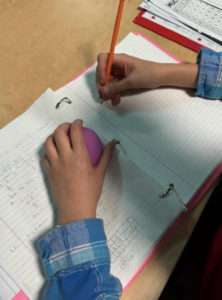
Julie Thornton (Math 7): Q1 is all about the adding, subtracting, multiplying, dividing realm of math-- and that applies to almost everything in the world. When students make that real world application, it’s an important breakthrough.
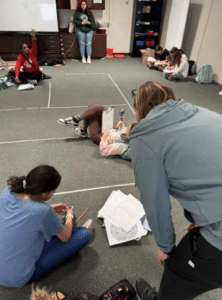
Eric Messerli (Math 8): I stopped doing the essay on solving equations this year (first time in 10 years!) to try a new approach. I differentiated the lessons and assignments to allow for three learning pathways: one for students who needed more time, one for students on the standard pace, and one for students who were ready to move more quickly and explore advanced topics. I think it went well for round 1, but I definitely need to adjust my methods for delivery and support to implement next year.
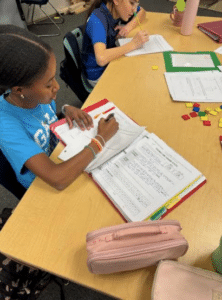
Sara Cougill (HS Math):In Statistics we learned about how to recognize misleading graphs and data representations and how to re-interpret them so that we can see what the data actually tells us.
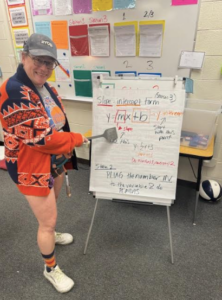
What Did Students Learn in Q2?
Alyssa Sanchez (Math 6): In Quarter 2 we learned about converting between fractions, decimals, and percentages in order to compare and order numbers. This is a challenging skill that we will revisit all year long, so if you have a GALS 6th grader, give them any and all opportunities to convert numbers in real life. We also did a fun graphing project where students created directions for a connect-the-dot mystery picture on the coordinate plane. I loved seeing their creativity and humor come out through their graphs! I am excited to see students continue to grow as we learn how to examine quantity relationships through ratios and ratio tables.

Julie Thornton (Math 7): In Quarter 2 we worked on a pumpkin project involving perimeter, surface area and volume. Students planned their jack-o-lantern designs using their math skills and brought it to fruition using their carving skills My classroom is pretty warm, so sometimes the pumpkins would melt into the floor overnight. A real Halloween horror!
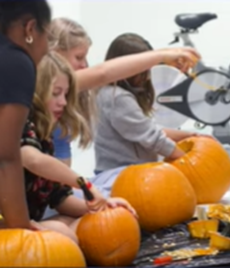
Eric Messerli (Math 8): I love teaching the 3-unit sequence in Algebra 1 in Quadratics, which culminates in doing some type of parabolic analysis of objects being catapulted through the air. Last year, we played "launcher golf" to end the unit.
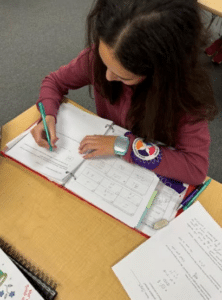
Sara Cougill (HS Math): In Q2, Geometry worked on beginning to understand what geometric proofs are and how to write them. We worked on logic skills using some very silly statements written by the students as a way to understand conditional and bi-conditional statements.
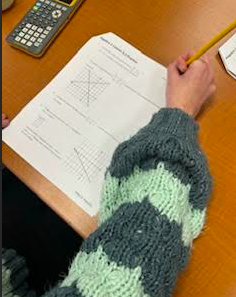
What Do You Love about Being a Math Teacher?
Alyssa Sanchez (Math 6): I love seeing students make connections between math topics, activating their own schema and making logical leaps. So many students (and adults) wildly underestimate themselves in Math, but math is beautifully logical, so the more we practice and know, the more we are able to make connections and find our own ways of making sense of new problems. It is truly magical to watch students find their own pathways to success!
Julie Thornton (Math 7): I like seeing when math finally clicks for students and they have that ah ha moment, and when students put the practice and time into basic skills to realize how important their foundation of knowledge is to propel them further
Eric Messerli (Math 8): Seeing students feel proud of how much they learn...and hearing from them as 9th graders that Algebra 1 is easy for them!
Sara Cougill (HS Math): I love making kids groan with all of my WONDERFUL math teacher jokes! I just want to watch the world learn!
What Do You Hope for your Students by the End of the Year in Math?
Alyssa Sanchez (Math 6): By the end of the year, my biggest hope is that all students see their own personal growth and successes. I do what I do in hopes that none of my students leave believing that they "just aren't good at math" because so many people, especially girls, fall into this fallacy. All of my students are mathematicians with their own strengths and needs, and my goal is to help them to find where they are at and what they need to keep pushing on their own paths!
Julie Thornton (Math 7): I hope that my students learn that they know a lot more math than they think
Eric Messerli (Math 8): They know that they are mathematicians who can learn any new concepts with practice, asking for help, and believing in themselves.
Sara Cougill (HS Math): While I'd love for all of my students to love math by the end of the school year, my goal is actually for math to not be something that holds them back. I want them to KNOW that they can DO math. They don't have to be good at math, or love math, they do have to DO math. And I don't want them to get to wherever they want to be after high school and then realize that they are scared of the math they have to do to be an engineer, an architect, anything else!
What Are Students Learning in Semester 2, both currently and in the weeks ahead?
Alyssa Sanchez (Math 6): In semester 2, students are learning to be savvy shoppers, comparing unit rates. We love a good deal! We will also get into some algebra, solving 1-step equations and using Order of Operations to simplify expressions (so they won't have to fight with strangers on the internet about the answers, they will KNOW). We will finish our year with some data/statistics and geometry mini projects.
Julie Thornton (Math 7): In semester 2, we started with percentages and complete a lot of real-world problems for practice. After that, we will get into combining like terms, the distributive property, and one- and two-step equations. Next, we will learn about angles and finish the year with statistics.
Eric Messerli (Math 8): Math 8: Exponent Properties, Pythagorean Theorem, Systems of Equations, Transformations and Volume,
Algebra 1: Quadratics and Statistics
Sara Cougill (HS Math): In semester 2, Algebra 1 moves on to exponential growth and decay functions as well as polynomial functions. Geometry is moving on to proving triangles congruent.